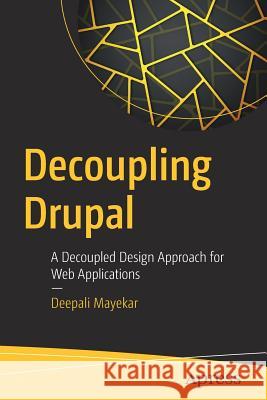Decoupling Drupal: A Decoupled Design Approach for Web Applications » książka
topmenu
Decoupling Drupal: A Decoupled Design Approach for Web Applications
ISBN-13: 9781484233207 / Angielski / Miękka / 2017 / 68 str.
Decoupling Drupal: A Decoupled Design Approach for Web Applications
ISBN-13: 9781484233207 / Angielski / Miękka / 2017 / 68 str.
cena 133,12 zł
(netto: 126,78 VAT: 5%)
Najniższa cena z 30 dni: 127,20 zł
(netto: 126,78 VAT: 5%)
Najniższa cena z 30 dni: 127,20 zł
Termin realizacji zamówienia:
ok. 22 dni roboczych
Bez gwarancji dostawy przed świętami
ok. 22 dni roboczych
Bez gwarancji dostawy przed świętami
Darmowa dostawa!
Kategorie:
Kategorie BISAC:
Wydawca:
Apress
Język:
Angielski
ISBN-13:
9781484233207
Rok wydania:
2017
Ilość stron:
68
Waga:
0.13 kg
Wymiary:
23.39 x 15.6 x 0.43
Oprawa:
Miękka
Wolumenów:
01
Dodatkowe informacje:
Wydanie ilustrowane











